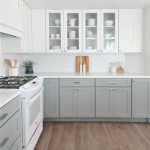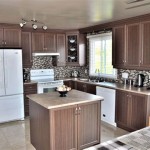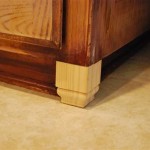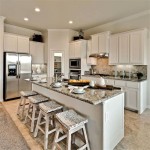Essential Aspects of Kitchen Cabinet Differences
Identifying the crucial aspects of kitchen cabinets is vital for making informed decisions regarding their selection and installation. Understanding these differences empowers homeowners to create customized kitchen spaces that meet their unique needs and preferences.Construction Materials
Kitchen cabinets can be constructed from various materials, including wood, laminate, thermofoil, and acrylic. Wood cabinets offer durability, natural beauty, and high-end aesthetics. Laminate cabinets are cost-effective and available in diverse colors and patterns. Thermofoil cabinets mimic wood grain textures with enhanced resistance to moisture and wear. Acrylic cabinets provide a sleek, seamless look with exceptional durability and resistance to scratches and stains.
Door Style
Door style significantly impacts the overall appearance of kitchen cabinets. Shaker style, with its simple recessed panel and flat frame, remains popular for its timeless appeal. Flat-front cabinets offer a modern and minimalist aesthetic, while raised-panel cabinets add depth and traditional charm. Glass-front cabinets allow for display of dishware and glassware, enhancing the ambiance of the kitchen.
Finish
The finish of kitchen cabinets affects both their appearance and durability. Paint finishes come in a wide array of colors and can be customized to match any decor. Stained finishes showcase the natural beauty of wood grain and are available in various shades. Lacquered finishes provide a high-gloss sheen and enhance durability, while glazed finishes create an antiqued or distressed look.
Storage Options
Adequate storage is essential in a well-designed kitchen. Kitchen cabinets offer various storage solutions, including drawers, shelves, pull-outs, and corner units. Drawers provide easy access to items, while shelves offer ample storage capacity. Pull-outs maximize space utilization in deep cabinets, and corner units efficiently utilize often-overlooked spaces.
Accessories
Accessories enhance the functionality and convenience of kitchen cabinets. Lazy Susans, pull-down shelves, and spice racks optimize storage and accessibility. Soft-close hinges and drawer slides minimize noise and create a refined feel. Lighting systems illuminate cabinet interiors, making it easier to locate items. These accessories transform kitchen cabinets into efficient and user-friendly spaces.
Cost
The cost of kitchen cabinets varies depending on factors such as material, size, style, and accessories. Wood cabinets are generally the most expensive, while laminate cabinets are the most affordable. Factors such as custom sizing and special finishes can also influence the cost. It's important to set a budget and prioritize features to find the best balance of value and affordability.
Conclusion
Understanding the essential aspects of kitchen cabinet differences empowers homeowners to make informed choices that align with their specific needs, preferences, and budget. By considering construction materials, door style, finish, storage options, accessories, and cost, homeowners can create dream kitchens that seamlessly integrate function, aesthetics, and value.
8 Diffe Types Of Kitchen Cabinets You Ll Love

Cabinetry Terms With Pictures A Guide To Understanding Kitchens

The Difference Between In Stock And Custom Cabinets Home Depot

How To Design Your Kitchen With Mismatched Cabinets Cabinetdoors Com

8 Diffe Types Of Kitchen Cabinets You Ll Love

Using Diffe Wall Cabinet Heights In Your Kitchen

Shaker Cabinets Vs Raised Panel Choice Cabinet

About Two Tone Kitchen Cabinets Wolf Home S

The Best Kitchen Cabinet Types For Your Style And Budget

8 Types Of Kitchen Cabinets Must Know Guide
Related Posts








